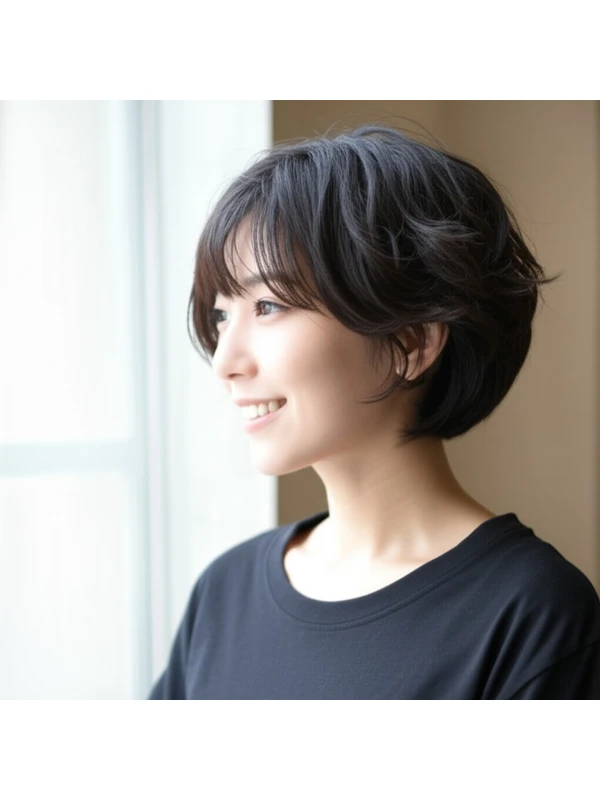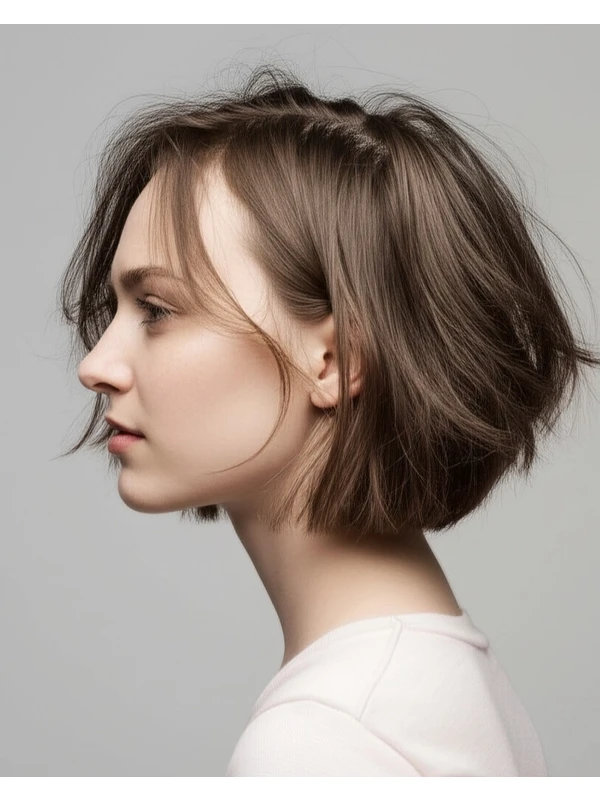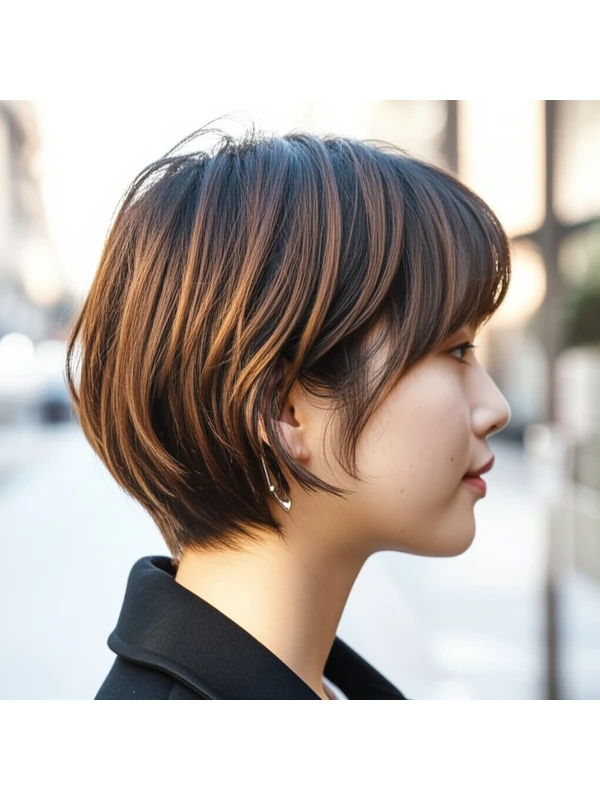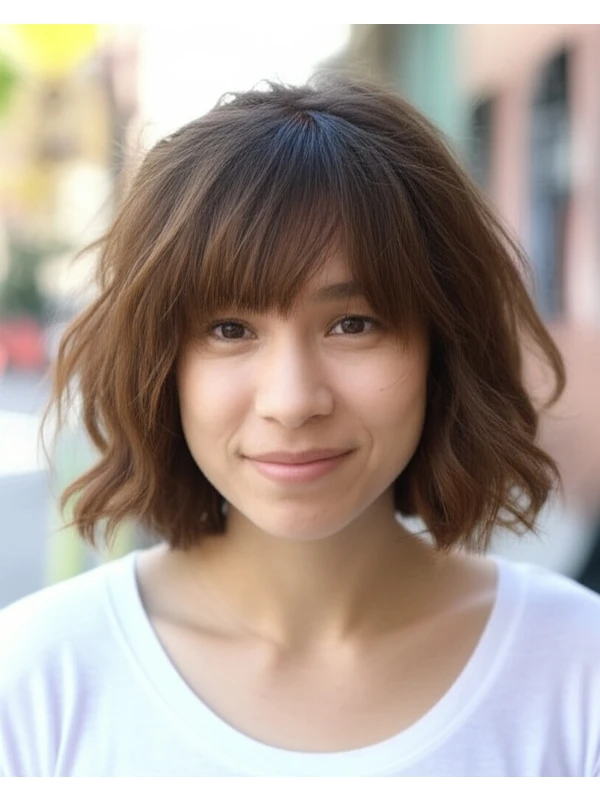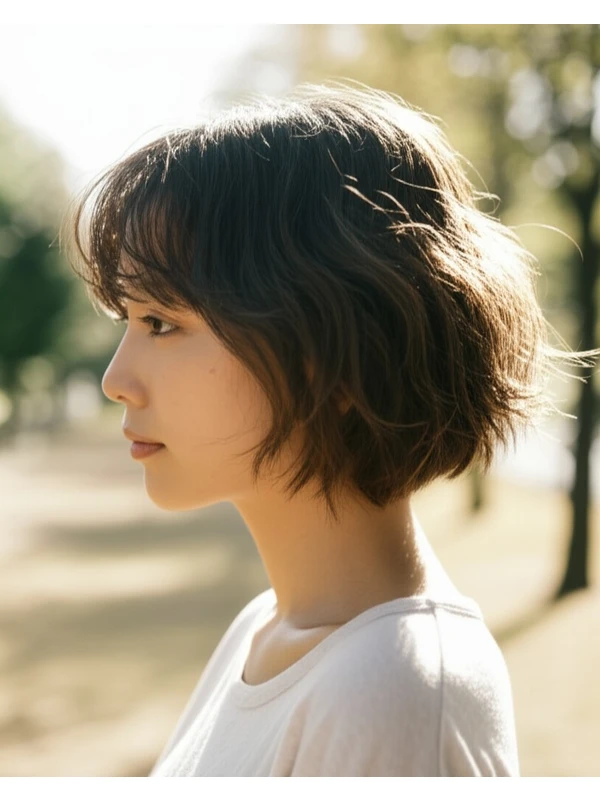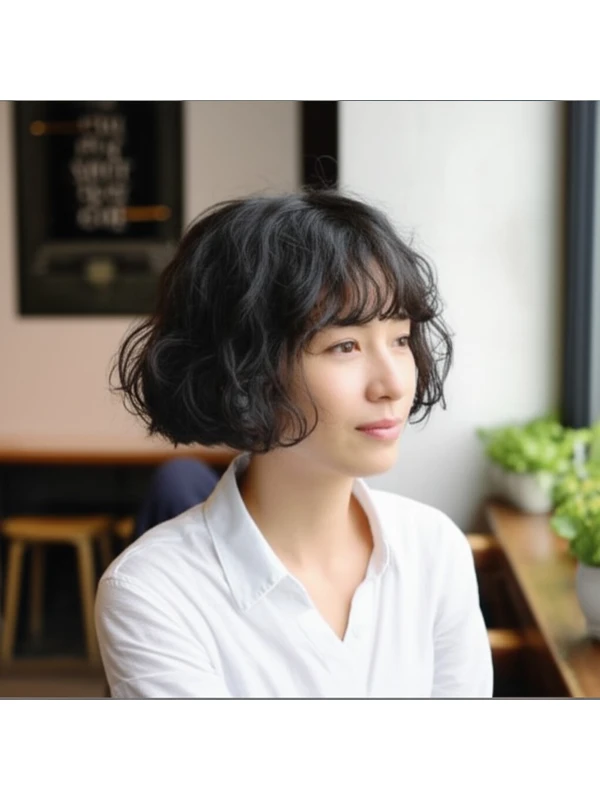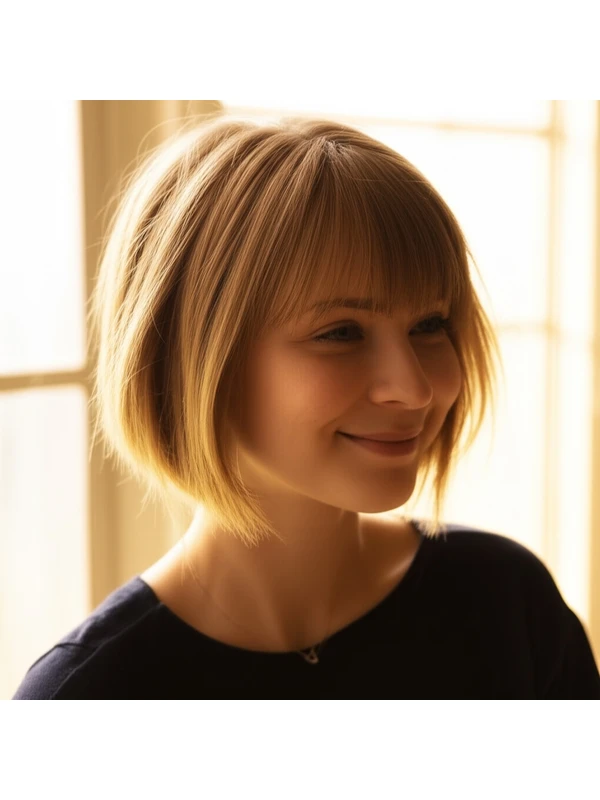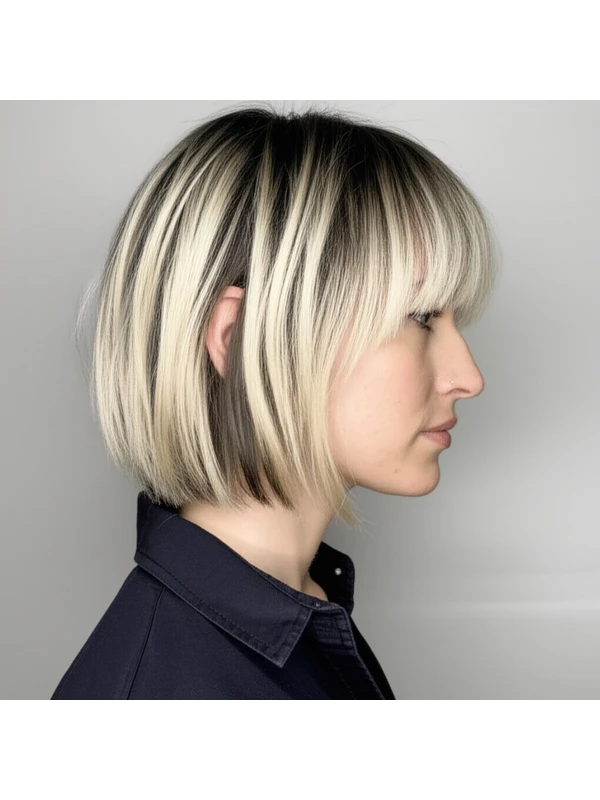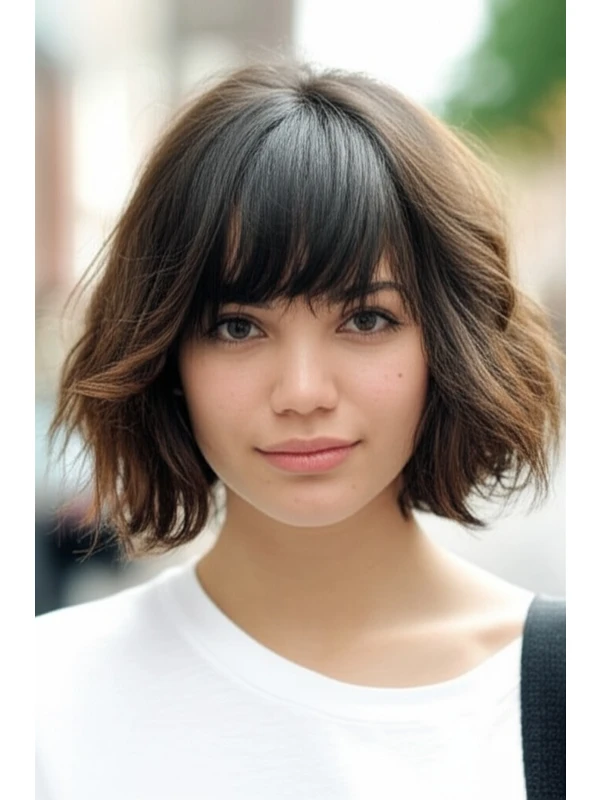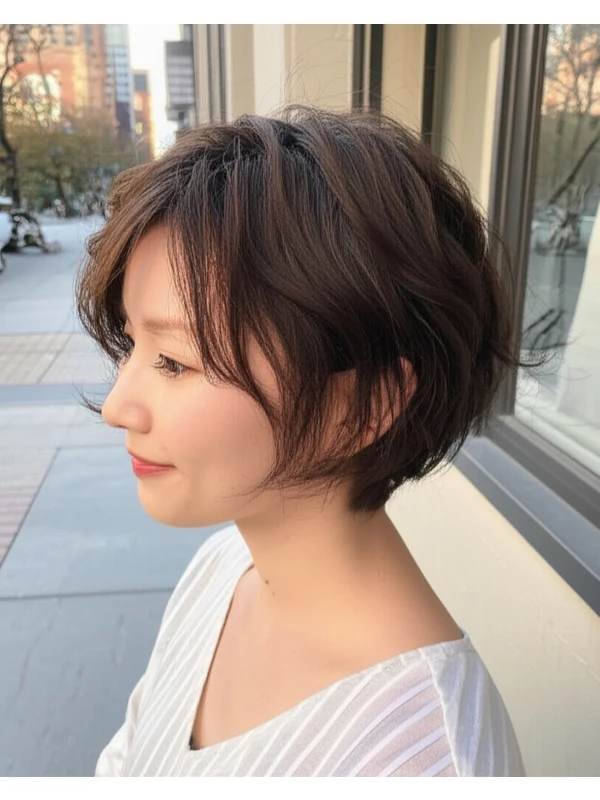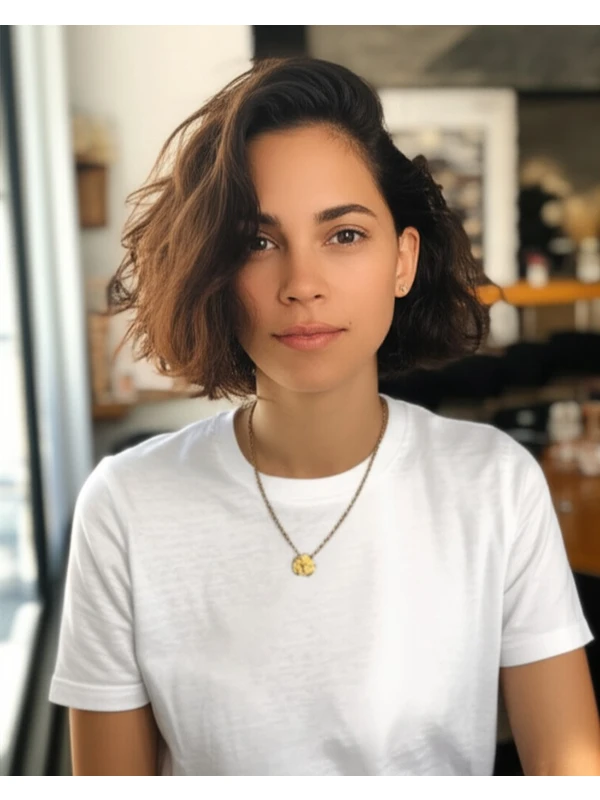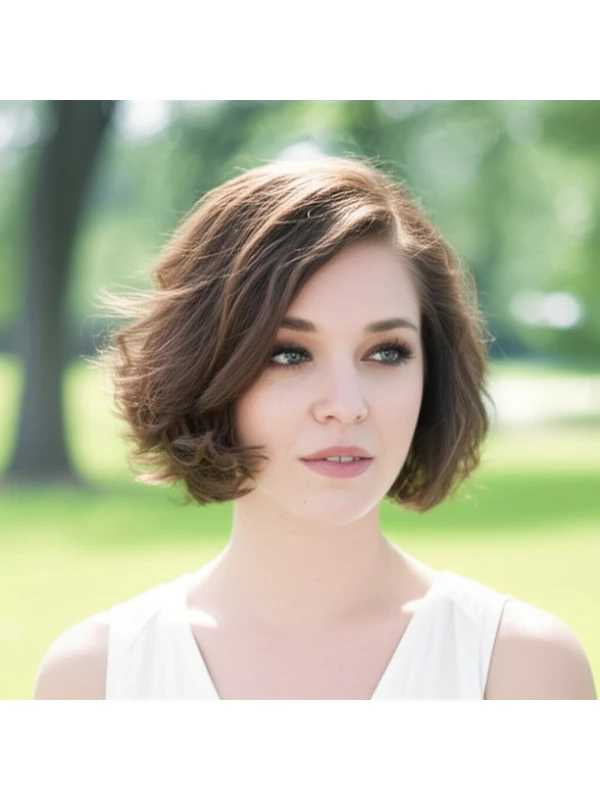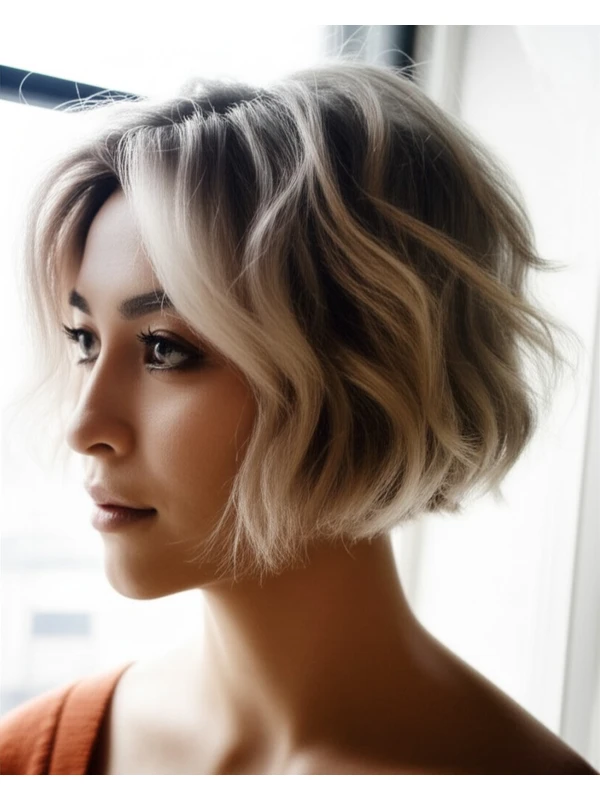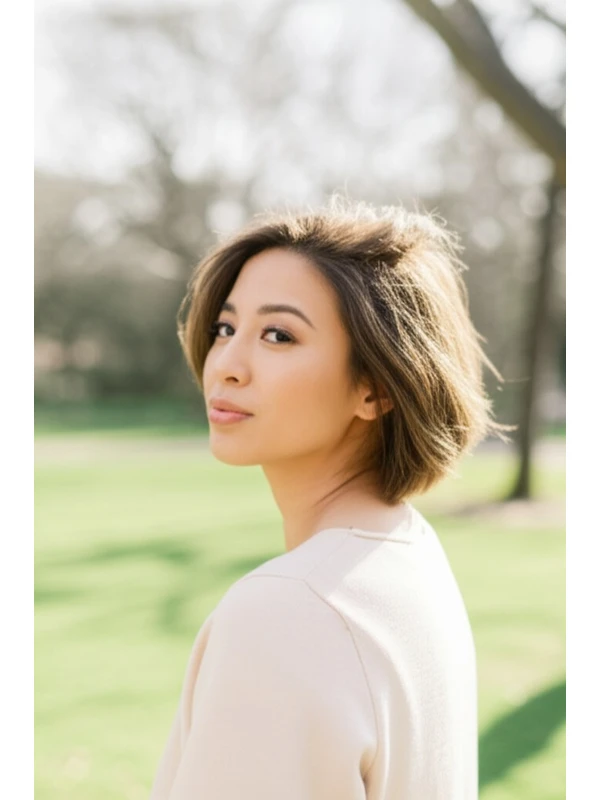#The Jaw-Length Bob: A Guide to Effortless Style
The jaw-length bob is a timeless classic for good reason – it’s chic, versatile, and surprisingly flattering on many face shapes and hair types. But getting your perfect jaw-length bob requires understanding its nuances. This guide breaks down everything you need to know, from the cut's geometry to styling tips and maintenance.
#1) Background & Definition: What is a Jaw-Length Bob?
The jaw-length bob (often simply called "the bob") is a haircut where the hair falls roughly around your jawline. It’s generally blunt or slightly layered, creating a clean, defined edge.
- Cut Geometry: Think of it as a rounded rectangle framing your face. The length remains consistent around the head, though slight layering can add movement and texture.
- Key Features: Sharp lines (or soft edges depending on styling), minimal layering (usually), and a focus on shape.
- Typical Length Ranges: Generally, the hair hits between 1-3 inches below your chin. A true "jaw length" usually sits right at the jawbone itself.
- Alternative Names: Chin bob, short bob, blunt bob (when very straight).
#2) Face Shape Fit: Finding Your Flattering Angle
The key to a great bob is ensuring it complements your face shape. Here's how different shapes can rock this style:
- Oval Faces: Lucky you! Oval faces are the most versatile and almost any jaw-length bob will look fantastic. Experiment with blunt ends or subtle layers. Fringe Option: A straight, eyebrow-grazing fringe adds a playful touch.
- Round Faces: A bob can slim a round face by adding vertical lines. Opt for a slightly angled bob (longer in the front) to elongate your features. Avoid overly rounded bobs that emphasize width. Fringe Option: Side-swept bangs soften the look and create asymmetry, making your face appear less round.
- Square Faces: Soften strong jawlines with a layered or textured bob. This removes some of the harsh angles. Avoid blunt cuts that accentuate squareness. Fringe Option: A soft, feathered fringe helps to break up angular features.
- Heart-Shaped Faces: Balance a wider forehead and pointed chin with a bob that hits right at the jawline. Side parts help create asymmetry and balance proportions. Fringe Option: A wispy or textured fringe can soften the forehead without adding too much width.
- Diamond Faces: Similar to heart shapes, diamond faces benefit from softening angles. A layered bob with face-framing pieces is ideal. Fringe Option: A long, sweeping fringe that blends into the layers adds softness and balance.
- Oblong (Long) Faces: Avoid bobs that are too long as they can elongate your face further. Opt for a slightly shorter, blunt cut to create the illusion of width. Layers around the cheekbones add volume. Fringe Option: A full, straight-across fringe will shorten and broaden the face.
#3) Body Proportions & Height Guidance: Tailoring the Bob to You
Your height and body shape influence how a bob looks – it’s not just about your face!
- Petite (Under 5'4"): Shorter, more blunt bobs can make you appear taller. Avoid overly long or layered styles that might overwhelm a smaller frame.
- Average Height (5'4" - 5'8"): You have the most flexibility! Experiment with different lengths and layers to find what suits your style best.
- Tall (Over 5'8"): A slightly longer bob, hitting just below the jawline, can be very flattering. Adding volume at the crown will prevent a flat silhouette.
- Narrow Shoulders: A layered bob that adds width around the shoulders creates balance. Side parts also broaden the shoulder line visually.
- Broad Shoulders: Keep the lines clean and sharp to avoid adding visual bulk. Avoid excessive layering or volume at the shoulders.
- Short Neck: Shorter bobs (closer to the jawline) create the illusion of a longer neck. Avoid styles that fall directly on your collarbone, which can accentuate a shorter neck.
- Long Neck: A bob with more length and layers softens the elongated look. Side parts add width and balance.
#4) Works Best With Hair Types & Densities: Matching Cut to Texture
This is crucial! What looks amazing in a photo might not work for your hair type.
- Straight Hair: Jaw-length bobs are incredibly sleek on straight hair, showcasing the clean lines of the cut.
- Wavy Hair: A bob enhances natural waves and creates effortless texture. Consider internal layers to prevent bulkiness.
- Curly/Coily Hair: While possible, a jaw-length bob requires careful consideration due to shrinkage! The length needs to be significantly longer than your desired finished length to account for curl factor. Layering is essential to remove weight and encourage shape. Shrinkage Factor: Expect 20-50% shrinkage depending on the coil pattern.
- Fine Hair: A blunt bob can make fine hair appear thicker, but avoid overly heavy layering which can create a wispy look.
- Medium/Thick Hair: A layered bob works well to remove weight and add movement.
- Density Tips: If you have dense hair, consider thinning shears to reduce bulk. If your hair is sparse, strategic layers can create the illusion of volume.
#5) Styling Variations: From Sleek to Textured
The beauty of a jaw-length bob lies in its versatility!
- Sleek vs. Textured: A sleek bob uses smoothing products and minimal heat for a polished look. A textured bob embraces natural movement with texturizing sprays or sea salt sprays.
- Middle vs. Side Part: Middle parts create symmetry; side parts add softness and volume.
- Fringe Variations: Blunt bangs, wispy fringes, side-swept bangs – the possibilities are endless!
- Occasion Styling:
- Casual: Air dry with a texturizing product for effortless waves.
- Office: Sleek and straight with a serum to tame flyaways.
- Evening: Add volume at the roots using mousse and curling your ends under for a vintage vibe.
#6) Maintenance: Keeping Your Bob Beautiful
- Trim Cadence: Every 6-8 weeks is standard, but depends on growth rate and desired shape. Curls/coils may need more frequent trims (4-6 weeks).
- At-Home Routine: Gentle shampoo & conditioner, leave-in conditioner for moisture.
- Heat vs Air Dry: Minimize heat styling to protect hair health. Embrace air drying whenever possible.
- Product Checklist: Shampoo, Conditioner, Leave-In Conditioner, Heat Protectant (if using hot tools), Smoothing Serum/Oil, Texturizing Spray (optional).
- Estimated Daily Styling Time: 5-15 minutes depending on desired style and hair type.
#7) Grow-Out Roadmap: Evolution Over Time
- Months 1-3: The bob maintains its initial shape. Focus on trims to refine the edges.
- Months 3-6: The length starts to grow out, potentially losing some of its sharpness. Consider adding layers or a fringe to maintain interest and prevent a blunt, boxy look. You might opt for a slightly longer style during this transition.
#8) Color Pairings: Enhancing Your Bob's Beauty
- Cool Undertones: Ash blonde, silver, icy brown – these shades complement cool skin tones and create a modern feel.
- Warm Undertones: Honey blonde, caramel brown, copper – these hues enhance warm skin tones and add richness.
- Low-Commitment Options: Balayage or babylights can add dimension without a drastic color change.
#9) Season & Occasion Guide: Styling for Every Moment
- Spring/Summer: Lighter textures, beachy waves, brighter colors.
- Fall/Winter: Sleeker styles, deeper tones, more volume at the roots.
- Work: Polished and professional – sleek or softly layered.
- Weddings/Parties: Elevated styling with curls, braids, or accessories.
- Formal Events: A classic bob looks elegant with minimal styling - think smooth lines and a polished finish.
#10) Cost & Time: What to Expect at the Salon
- Salon Time: Typically 45-90 minutes for a standard cut. More complex styles (layers, fringe) may take longer.
- Price Range: Expect to pay slightly above average salon prices – typically in the mid-to-high range for haircuts, depending on location and stylist experience.
#11) Pros & Cons: Weighing Your Options
Pros: Versatile, flattering on many face shapes, relatively easy to style, timeless appeal. Cons: Requires regular trims, can be high maintenance if layered or textured heavily, may not suit all hair types without careful consideration.
#12) Salon Consultation Script: Questions to Ask & Prepare For
Here are some prompts you can use when discussing your jaw-length bob with a stylist:
- "I'm interested in a jaw-length bob. Can we discuss what length would best flatter my face shape?"
- “Could you show me examples of bobs on [your face shape/hair type]?”
- "How much layering do you recommend for my hair texture and desired style?"
- "What products will I need to maintain this cut at home, and how long should styling take each day?"
- "Can we discuss options for adding dimension with color without a drastic change?"
#FAQs: Your Burning Questions Answered
- Is a jaw-length bob suitable for fine hair? Yes, but ask your stylist about strategic layering to avoid a wispy look and create the illusion of thickness.
- Can I get a jaw-length bob with curly/coily hair? Absolutely! But be prepared for shrinkage – communicate your desired length clearly and discuss layering techniques.
- How much will it cost to color my new bob? Color costs vary widely depending on the technique and product used. Discuss options and pricing upfront.
- Can I style a jaw-length bob in an updo? While possible, shorter bobs can be trickier for updos. A slightly longer length offers more versatility.
- Will a blunt bob look harsh on my face? Not necessarily! Softening techniques like layering and side parts can make a blunt cut more flattering.
- How do I prevent split ends with this style? Regular trims, heat protectant products, and minimizing damage are key to healthy hair.
With careful planning and the right stylist, your jaw-length bob will be a stylish statement you’ll love!
